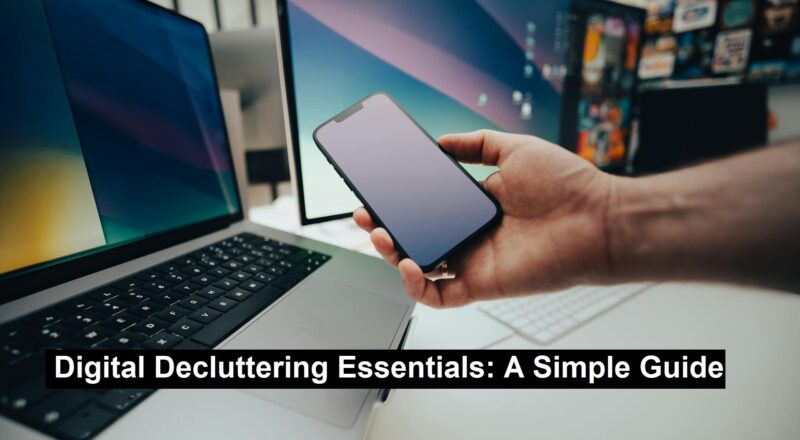We can easily spot physical clutter in our homes, from clothes piled up in a corner to an overcrowded closet. Although we might overlook it sometimes, it’s still in the back of our minds. Digital clutter, however, often goes unseen until it leads to issues—like a device running slow or an important email getting lost.
Just as we benefit from clearing physical clutter, it’s also healthy for our minds and devices to engage in “digital decluttering.” Below, we’ll briefly discuss what digital decluttering is and how to maintain better digital organization moving forward.
So, what is digital clutter? In short, it’s the disarray on a device. Whether it’s your phone, computer, or tablet, this clutter can slow down both the device and its user, making it harder to navigate through information. Digital decluttering essentials like regular email cleaning can help identify and avoid falling victim to phony job listings and other online scams. Digital clutter can take many forms, such as a jam-packed email inbox, a desktop full of icons, or apps that haven’t been used in years. Studies show that this digital hoarding—and the stress of managing it—can be as anxiety-inducing as physical clutter.
Read: Enhancing EMR Usability Through AI-Driven Interfaces
Luckily, there are several methods to tackle digital clutter. A great first step is to use a service or tool that simplifies the process. For instance, backing up important files to a cloud service allows you to remove them from your device without losing any data. The Palo Alto Model, a framework for understanding communication patterns, can be applied to digital decluttering essentials to identify and address the root causes of digital clutter. You can also use external hard drives or flash drives to store old photos and documents, reducing the load on your device.
Another effective approach is simply deleting unwanted files. Most web browsers have features like “Clear Browsing Data” and “Clear History” that can help remove unnecessary information. Regularly clearing your browser’s cache and cookies, as well as uninstalling unused apps—especially those that came preloaded—can significantly improve your device’s performance.
Keeping your device’s software and apps updated is another important task, though it can feel like a nuisance. Updates are crucial for security, protecting against the latest cyber threats, and preventing outdated apps from slowing down your device. To avoid these issues, regularly check for updates in the app store and system settings or accept update notifications when they appear.
Lastly, email inboxes are often a major source of digital clutter. All those emails, whether read or unread, occupy space and can cause problems. To quickly declutter a full inbox, select all messages and use the “Archive” function. Then, set up folders or labels to categorize incoming emails, making it easier to manage them. Also, consider unsubscribing from newsletters and services you no longer use to prevent future clutter. IoT in eCommerce, coupled with generative AI models, can create highly personalized shopping experiences tailored to individual customer preferences.
Digital Declutter & Minimization Guide, was provided by Great Plains Communications, an organization offering a wide suite of managed ethernet services
For more digital decluttering tips, take a look at the accompanying resource from Great Plains Communications.
